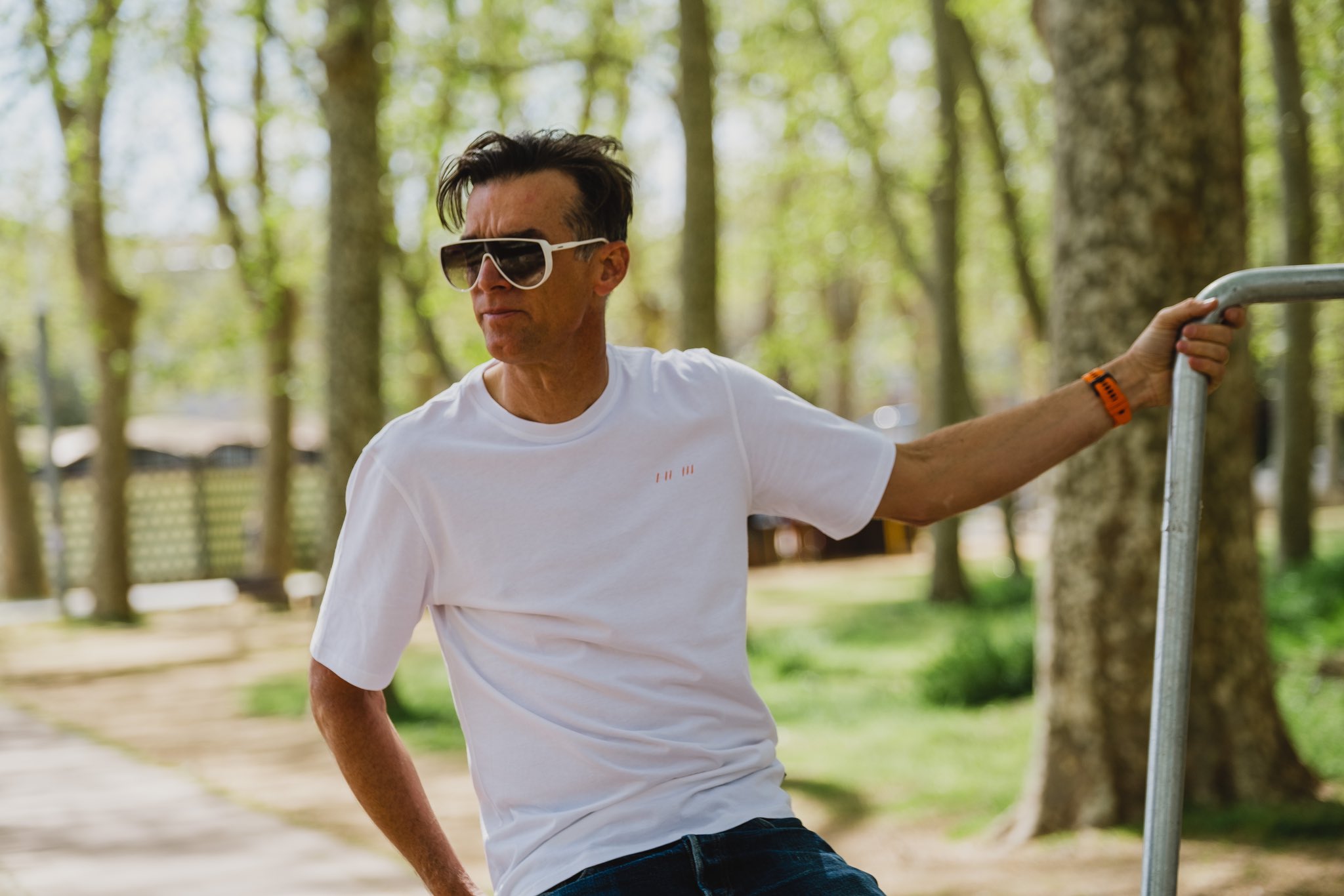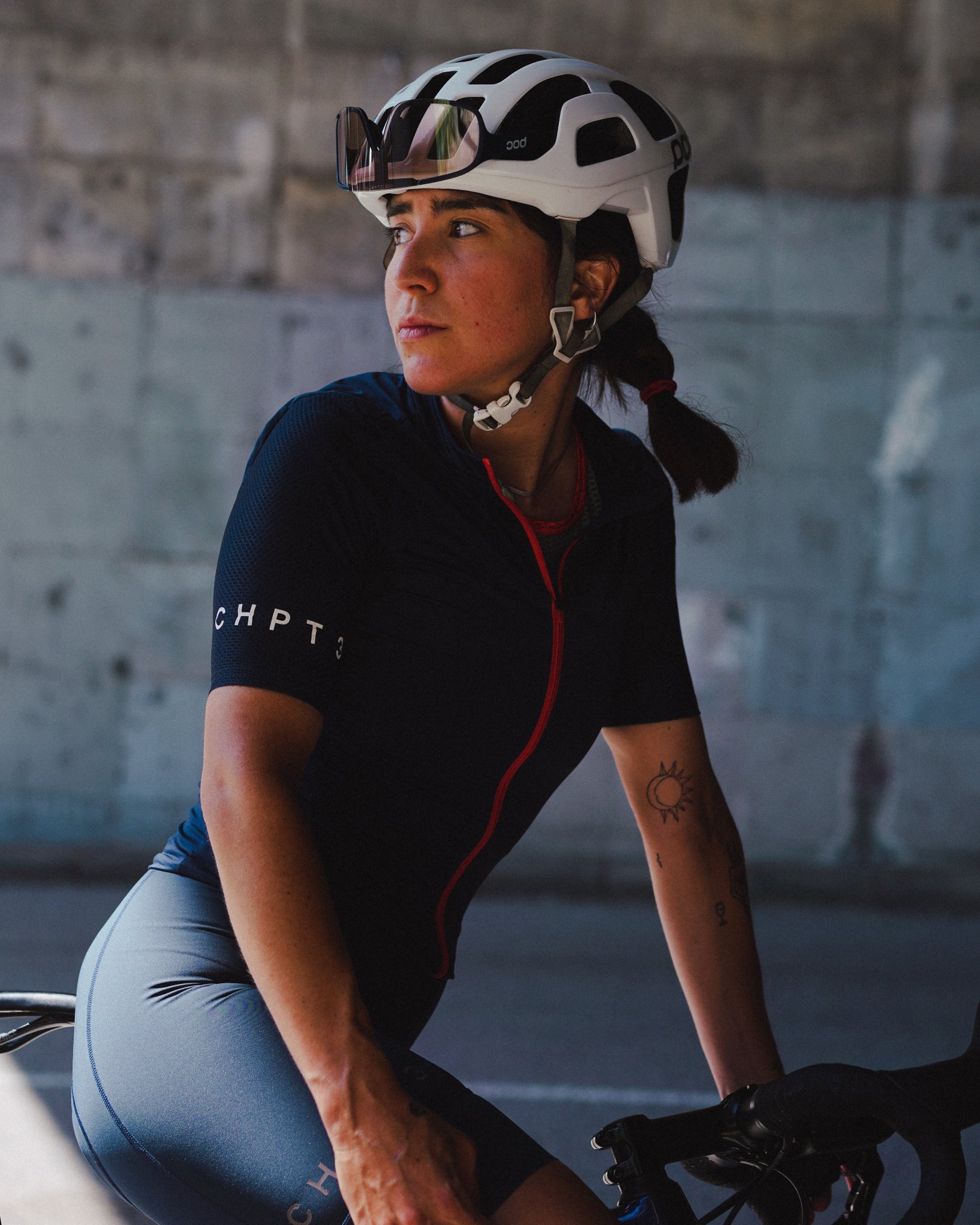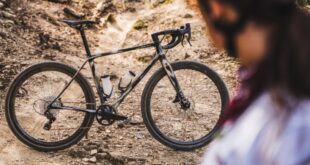David Millar is a household name in British cycling, but his plans to build something lasting resulted in Millar developing his own cycling apparel brand. Daniel Blackham sat down with the Tour de France stage winner to hear more about CHPT3.
This piece first appeared in the July edition of BikeBiz magazine – get your free subscription here
David Millar is known for an illustrious road racing career which saw him reach the pinnacle of the sport with multiple Tour de France stage wins. But when he called time on an 18 year career, he wanted to start a brand that was more than just a name – and CHPT3 was born.
“When we came in, it was very much a collaborative brand with Castelli,” explained Millar.
“Instead of taking the route of being a retired pro and doing capsule lines with my name, I wanted to do something else.
“As a retired athlete, no matter how good you are, unless you’re a Michael Jordan or something, you’re a depreciating asset, and over time, your name just gets replaced by the next big name.
“So I thought, instead of using my name, we could actually build the brand and turn that into an appreciating asset while my name was depreciating.”

CHPT3 is synonymous with Millar and remains driven by his vision and taste, but it has become recognisable on its own, largely thanks to collaborations with Castelli, Brooks, Brompton Factor, POC and Fizik.
“That was always the strategy for me,” said Millar.
“I wanted it to be something that became its own entity.”
In 2019, CHPT3 mutually agreed with Castelli that it would go off to manufacture its own products.
“The pandemic hit and it turned into an absolute nightmare,” said Millar.
“We ended up creating our first collection completely remote.”
“Then that became a doom loop because there were all the supply chain issues and it just couldn’t have been a more challenging time to create our own products.”
Alongside Covid, CHPT3 as a British brand has had to deal with the implications of Brexit. This led to Millar, who now resides in Girona, Spain, to establish a hub on the continent.
Millar said: “We went from a UK business that could service the world, to a UK business that services the UK, and a Spanish and EU business that services the EU and the rest of the world.
“That then sucked resources as well, because we had to create a new fulfilment centre and kind of create a new business over here, which wasn’t easy.
“All of those things have made it extremely challenging.”
Many businesses, irrespective of size, have described this period as the ‘perfect storm’ and Millar agrees it was a steep learning curve.
“But now we’re in a very good position in regards to how we can service our customers,” Millar explained.
“We’ve got a really good operation now and we kind of learned through trial and error.”

Sustainability
Throughout the last four years, many boutique brands appeared on social media as factories offered to do small runs of product.
“It just rapidly became a very oversaturated market and very much a race to the bottom,” said Millar.
“What I’ve noticed over the last 10 to 15 years is that cycling apparel products are so good, the technology gets better.
“Before, you needed different apparel for different occasions and often you needed to replace it relatively often. Now, you don’t need that much to satisfy your needs.”
Although all businesses need repeat custom to be financially viable, Millar didn’t want CHPT3 to be releasing new colourways and designs every week.
“One of the things that I’ve been very adamant about is making a sustainable business,” said Millar.
“If you’re going to use recycled fabrics, and then you’re constantly pumping out products, it sort of defeats the purpose of trying to limit waste and be as circular as we can.”
The route to manufacturing the recently debuted Elysée lifestyle collection was certainly not an easy one.
As a brand that had always used organic cotton, Millar was keen for CHPT3 to go a step further and manufacture the collection fully on British shores.
The organic cotton was knitted and dyed sustainably in Leicester before needing to be cut and sewn elsewhere.
This was not as easy as first thought.
“It went to four factories in the UK before it could be sewn,” said Millar.
“It was knitted, shipped to Blackburn, shipped to Scotland where it was cut but they couldn’t sew it so it was shipped down to London and one place couldn’t do it so it went to another.
“So it ended up taking two and a half-three years. That’s a journey.”
With performance products, there is the added layer of complexity of shaving weight and maintaining certain technical capabilities.
“Sometimes you are going to have to sacrifice sustainability for performance,” said Millar.
“I think our current jersey is 90% recycled fabrics and the performance is insane, but that was through trial and error of the first jersey iteration.
“The fabric just didn’t really work well enough for the performance we wanted so we went back to the drawing board and found another.”
Alongside the jersey, CHPT3 has managed to create a lycra short which is predominantly made from recycled fishing nets.
“Through that journey, you find sustainability doesn’t become a compromise,” said Millar.
“We have got to the point where we’re aligning performance and aesthetics with sustainability credentials. But that’s been through four years of trial and error and kind of banging your head against the wall.”

Women’s apparel
A trend that continues through the discussion with Millar about CHPT3 is how he and his team are always learning on the journey.
Part of the learning curve was the introduction of women’s apparel. Rather than create a token product, Millar was keen to develop specific products tailored to the female athlete.
“I was like ‘well let’s double down and make for women exactly what we make for men’,” said Millar.
“In fact, we went even deeper and did more, we did an indoor collection, we did a high end Biarritz collection.
“They had more options in winter wear.”
Unfortunately the collection didn’t take off as expected and Millar says that will shape how they approach women’s apparel in the future.
“We didn’t build a community first,” said Millar.
“In hindsight, we should have been a lot more realistic.Women have a very different attitude to sports apparel and also sport.
“Males tend to go into one sport whereas women tend to be multi-sport. And also, they look after their gear a lot better. Women tend to get something they like and wear it out.
“It’s not just that it’s 10 to 20% of the customer base. It’s also that they buy a lot less than that 80 to 90%.”
Despite this, CHPT3 will continue to make high end products for female athletes.
“We still would like to do women’s apparel,” said Millar
“But we’ll have to do a core range of beautiful performance wear.”

Urban cycling
Through its collaboration with Brompton, CHPT3 has become well known within the niche market of urban cycling.
This led Millar to ask the question: “How can CHPT3 make urban cycling interesting and cool?”
“I’ve kind of learned in the last few years that there’s not much headroom left in performance cycling apparel,” said Millar.
“All the brands are making amazing jerseys, amazing bibshorts, and we do as well.
“But what I love is this idea of taking that performance tech and experience, along with a love of fashion and style, and taking it into urban cycling.”
As part of its commitment to this sector, the brand launched the Transit Cycling Shoe earlier this year, a first of its kind engineered for riding in the city.
One of the key people behind the design of the shoe was James Carnes, a co-founder of CHPT3 who worked as a global creative director at Adidas for many years.
“We wanted to make a sneaker that you’d wear even if you weren’t a cyclist,” said Millar
“Often with urban cycling it’s a choice. Compromise performance and go in normal clothes or wear the stuff designed for it and immediately stand out like a sore thumb.
“When you’re urban cycling, 90% of the time you’re off the bike. So you want to have performance for that 90%, as well as that 10% on it.”
Millar is convinced that the niche of urban cycling is only going to grow in popularity, and he is keen for CHPT3 to be at the forefront of apparel for this sector.
“We want to get to that point where, if you walk in with the shoes on or eventually when we do a jacket, somebody doesn’t go ‘oh you’re a cyclist’,” said Millar.
“People ask ‘where did you get that jacket from?’. People want to own it, even if they’re not a cyclist.
“That’s the ultimate goal with urban cycling. You have all the functionality on the bike but when you get off you look very cool.”
 BikeBiz Bicycle and cycling retail news
BikeBiz Bicycle and cycling retail news




